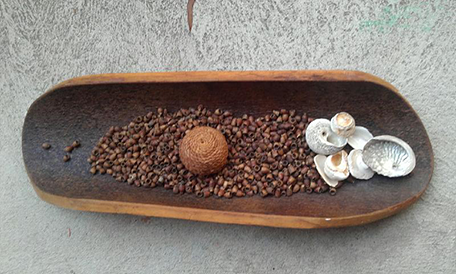
Our Culture and Heritage
Aboriginal people are the original occupants and inhabitants of Wagonga’s surrounding land and waterways. The traditional people of the area relied on the sea, the estuaries and the land to provide much of their food and sustenance for life. In the past, they traded with other Aboriginal people throughout the Yuin Nation.

The continued Aboriginal connection to land in WLALC boundary is best demonstrated by the many geographical names in the region that are derived from Aboriginal names, including Narooma, Kianga, Eurobodalla, plus the lakes and inlets (Lake Mummuga, Nangudga Lake, Bullengella Lake, Wagonga Inlet), beaches (Yabbara Beach), creeks (Billa Bilba Creek, Burrimbidgee Creek), parks (Nangudga Park, Waramba Park, Gulaga National Park) and street names (Wonga Road, Yabbara Drive). The Yuin Nation extends from the Shoalhaven in the north to Eden in the south and the traditional owners of the Narooma area are part of the Walbunga clan.
The Aboriginal language of the Eurobodalla region is the Dhurga/Dharawal. According to the NSW Department of Aboriginal Affairs all Aboriginal languages in NSW fall in the very high risk of loss category without community intervention and help from language experts. However, the Dhurga/Dharawal language is one of ten NSW Aboriginal languages listed as healthy enough to be taught in schools and TAFE NSW.
WLALC will continue to protect land and waterways of cultural significance for the future generations use and enjoyment.
The WLALC region has lands and waterways of cultural significance to the Aboriginal community. WLALC is very active in working with the Office of Environment and Heritage (OEH) to record Aboriginal places and will continue to do so by making Aboriginal Place Nominations. WLALC has also been working with Eurobodalla Shire Council to install interpretive signs around Wagonga Inlet and provide labour for Caring for Country.
WLALC Board advocates for greater recognition of traditional fishing rights and sees this as a fundamental custodial right. The Batemans Bay Marine Park Authority and NSW Fisheries have impacted fishing rights and gathering rights to abalone, local fish species and lobster. The issue of access to natural resources for both land and sea is an important part of our members and traditional custodian’s lives, and will keep this on their agenda until an agreement is in place.
WLALC sees its core focus the promotion of culture maintenance and in its everyday services aims to instil cultural pride through cultural practice. The land and waterways management is an example of this strategy.
WLALC supports the reclamation of local Aboriginal Dhurga/Dharawal language. WLALC was successful in obtaining support from TAFE NSW to conduct a 15 week course to the members of the WLALC, with positive attendance for the language course. A member who attended the training has compiled two language books which the local schools are using. WLALC continues to assist with the production of language materials. WLALC will continue to seek Aboriginal place nominations with OEH. For instance, Montague Island’s traditional Aboriginal name is Barranguba.
 In 2005, freehold title to Gulaga National Park was handed back to the traditional owners. The title is held in trust for traditional owners by WLALC and Merrimans Local Aboriginal Land Council. The Park is governed by a 13 member Board of Management. Aboriginal people hold a majority on this Board. Furthermore, there are approximately nine Aboriginal people employed at the Park with an opportunity to liaise with the Park to develop more employment for Aboriginal people.
In 2005, freehold title to Gulaga National Park was handed back to the traditional owners. The title is held in trust for traditional owners by WLALC and Merrimans Local Aboriginal Land Council. The Park is governed by a 13 member Board of Management. Aboriginal people hold a majority on this Board. Furthermore, there are approximately nine Aboriginal people employed at the Park with an opportunity to liaise with the Park to develop more employment for Aboriginal people.

